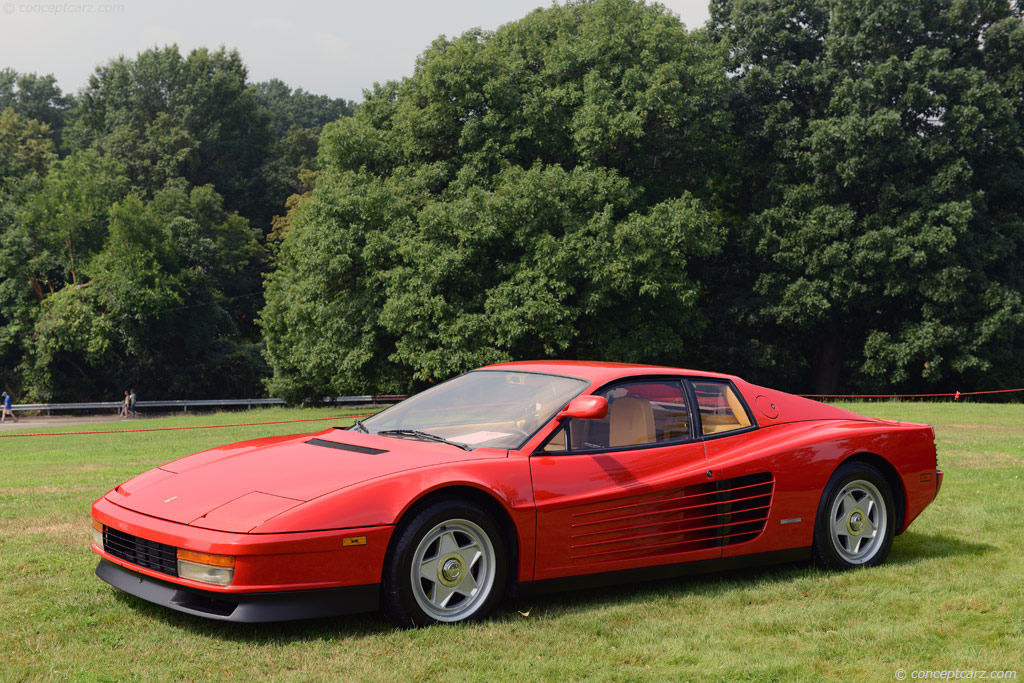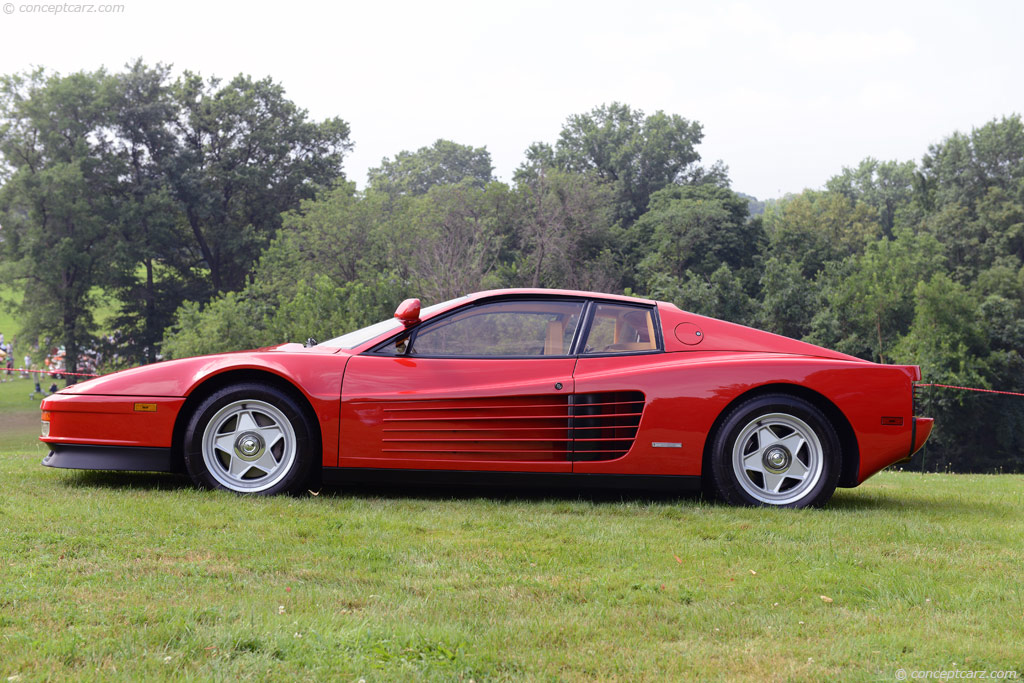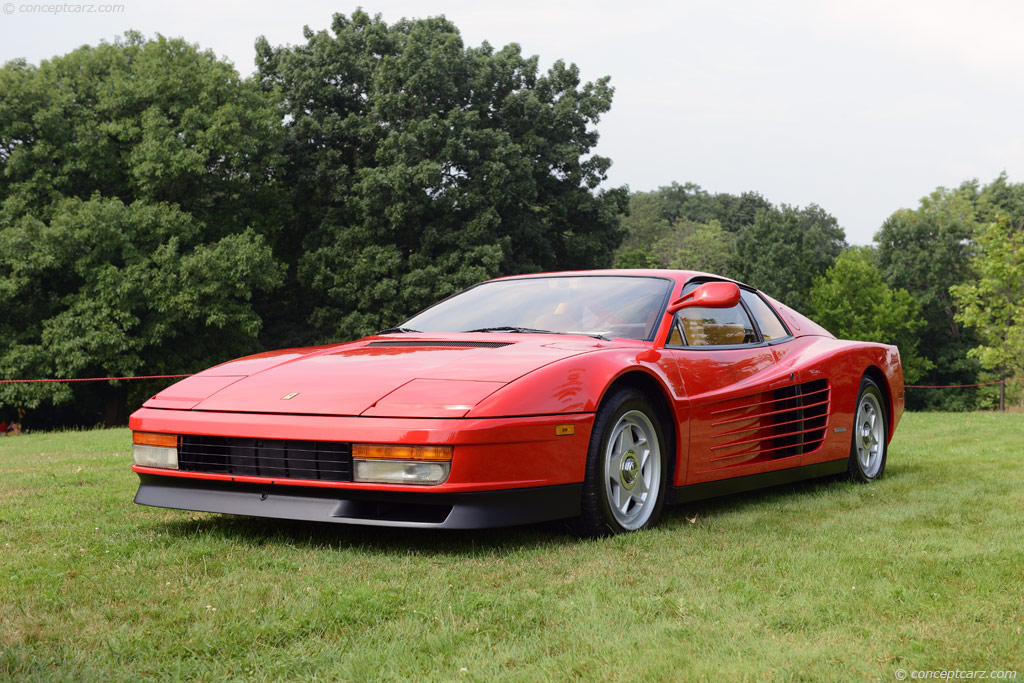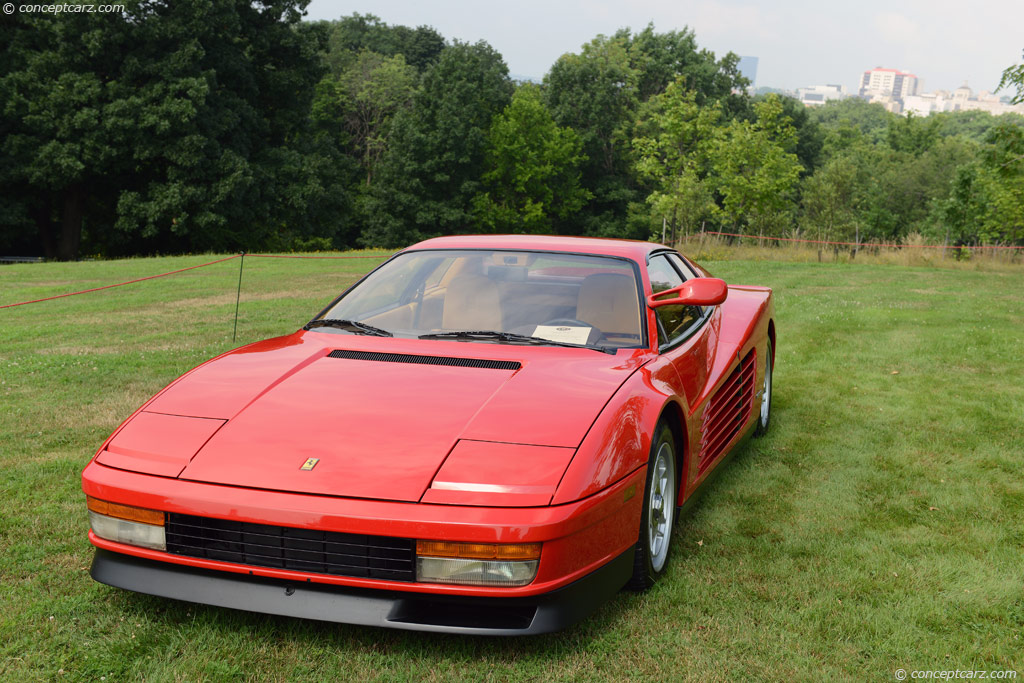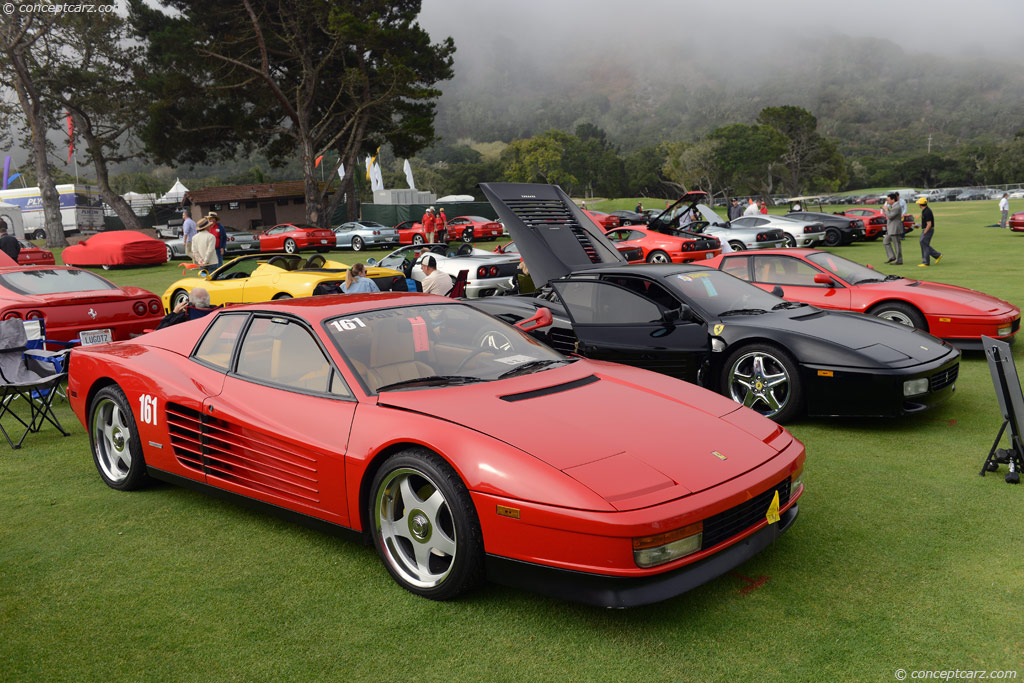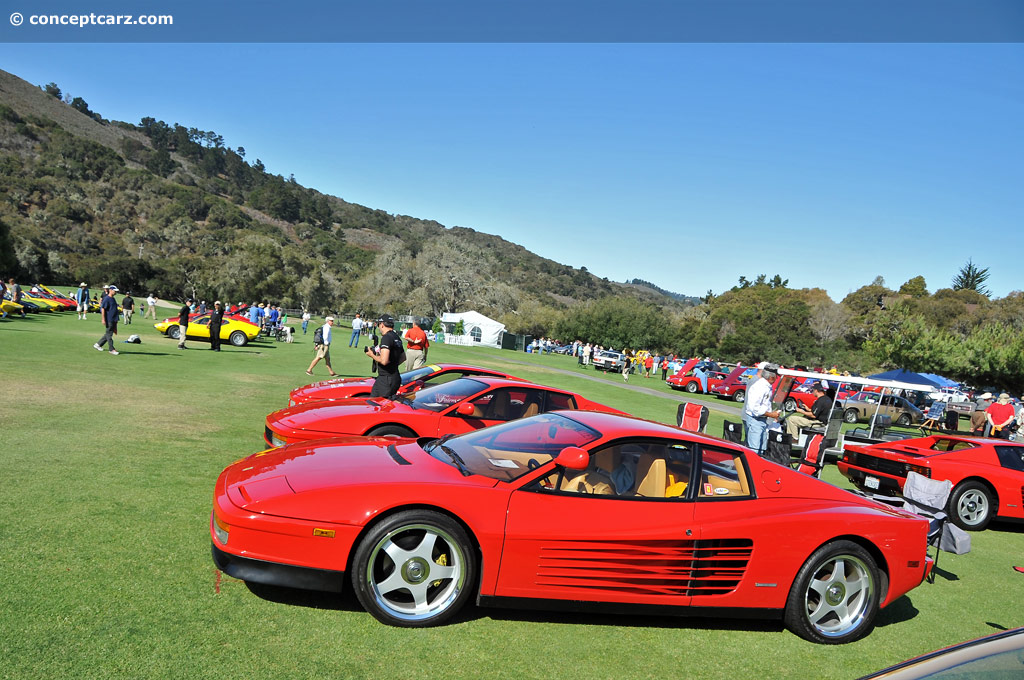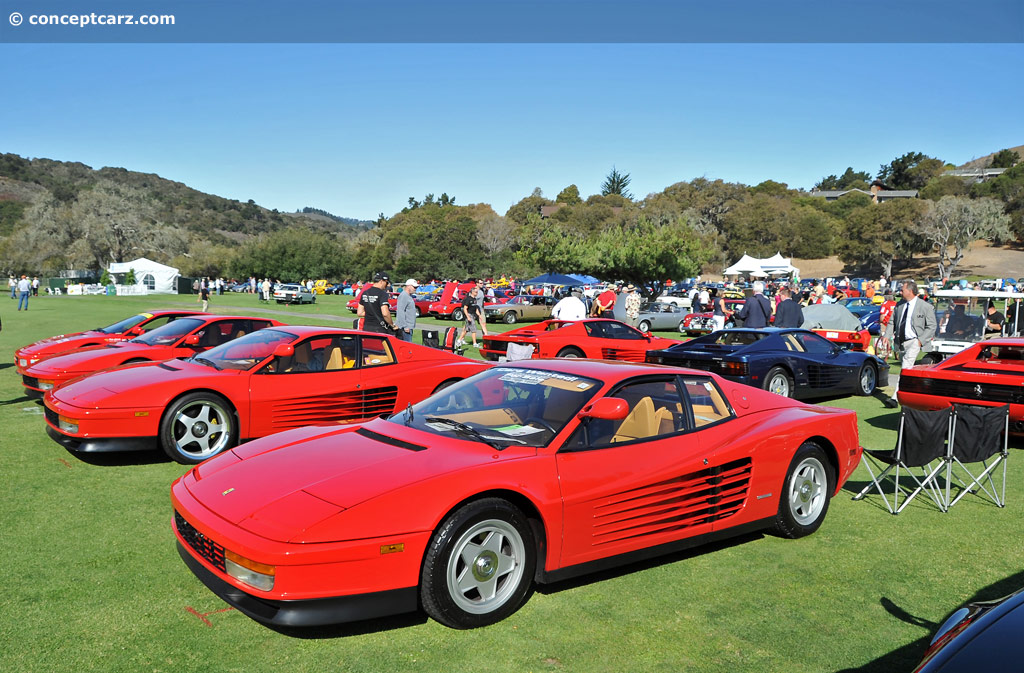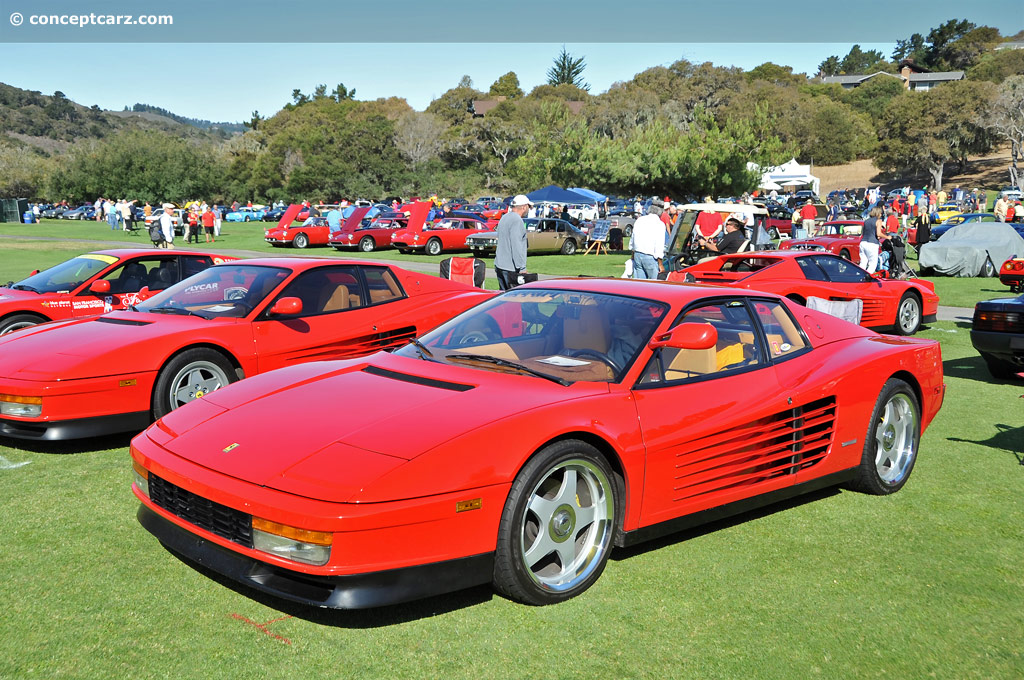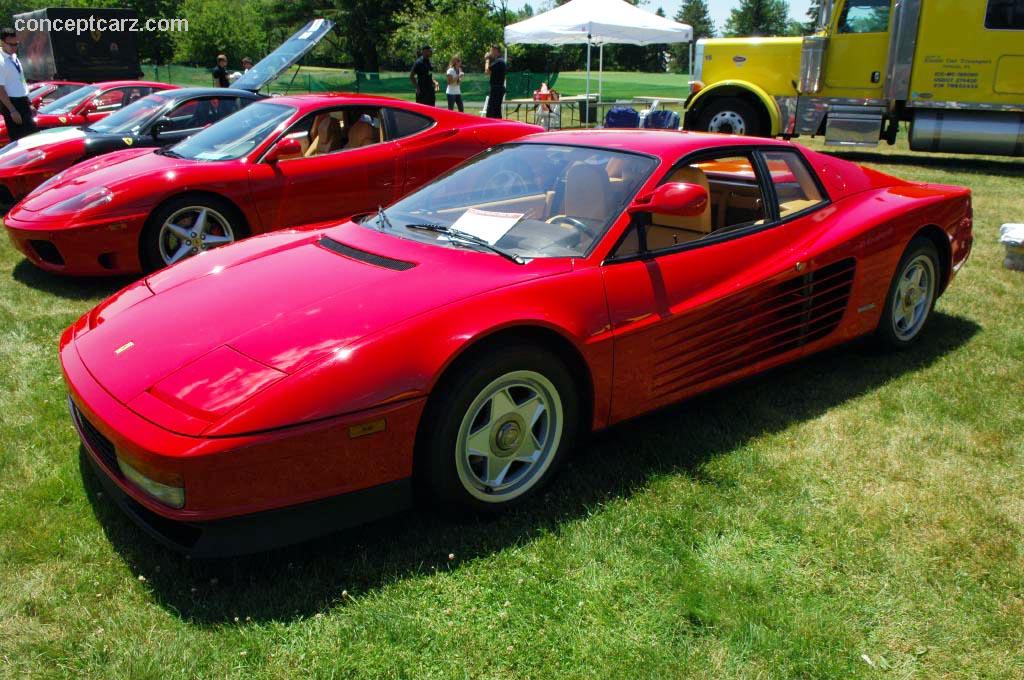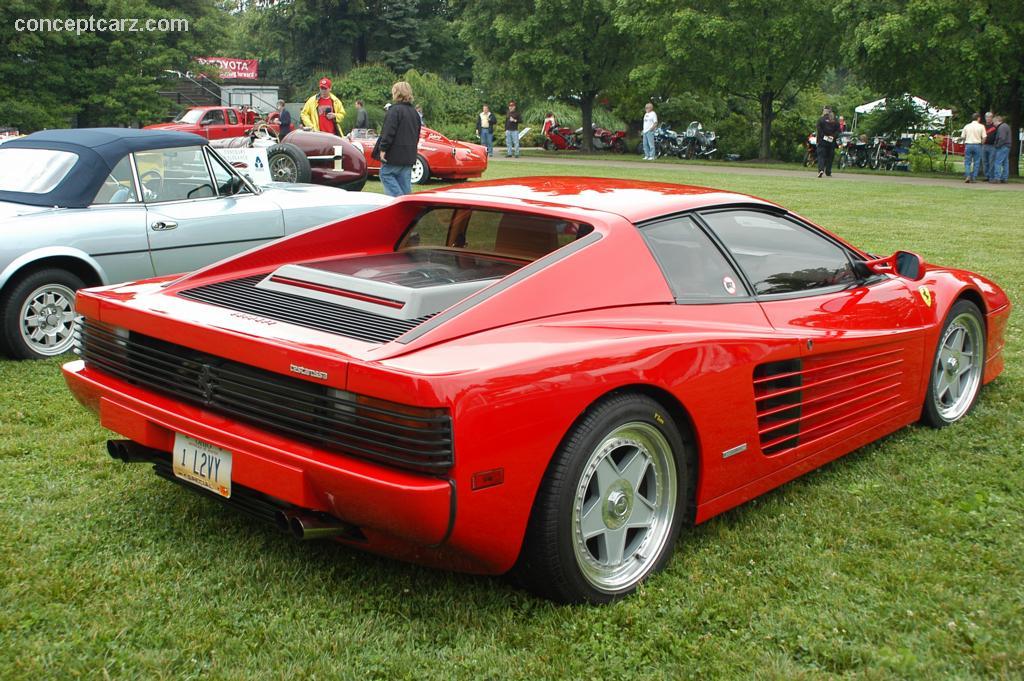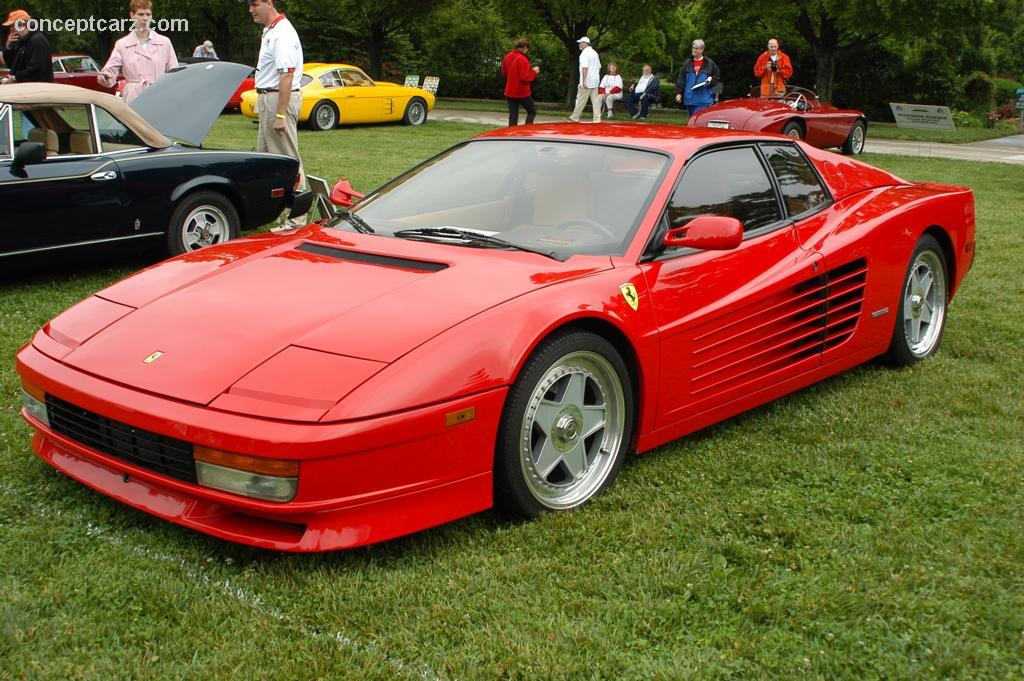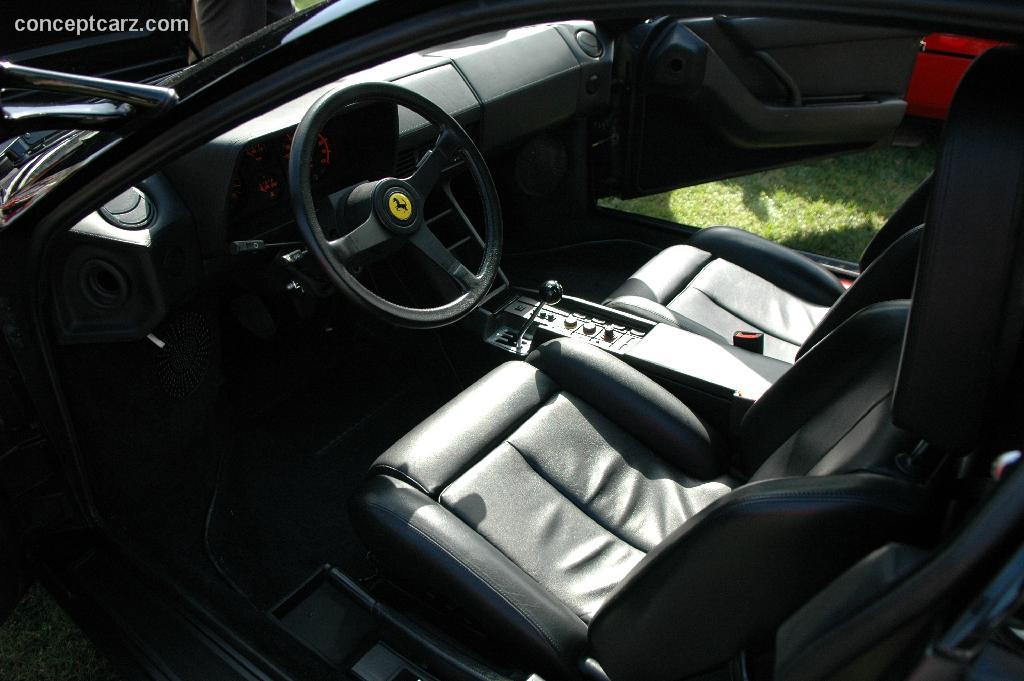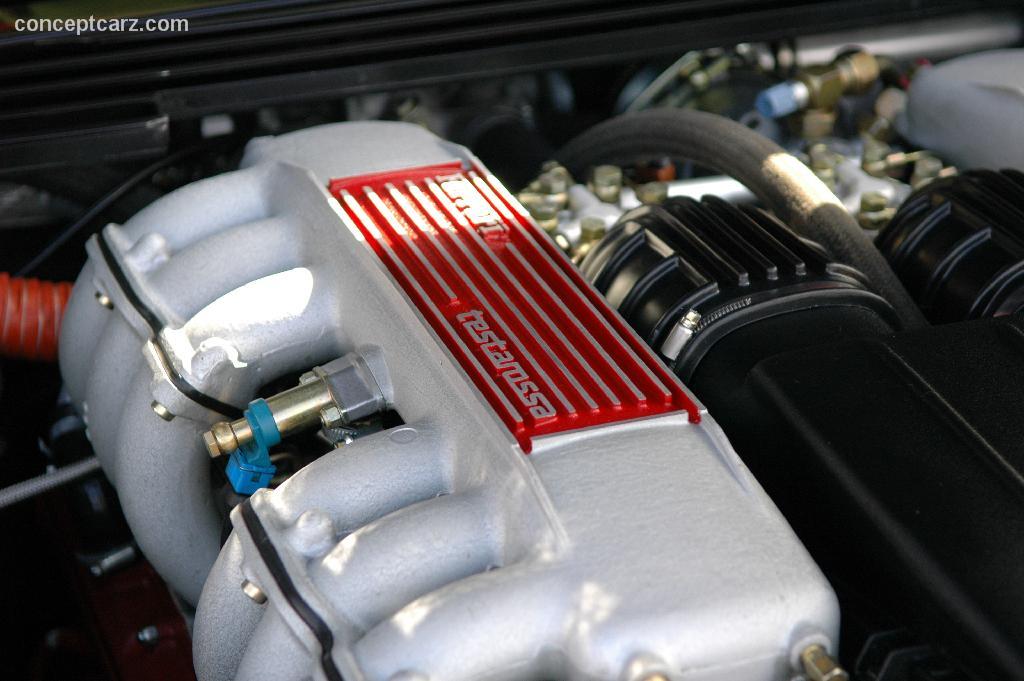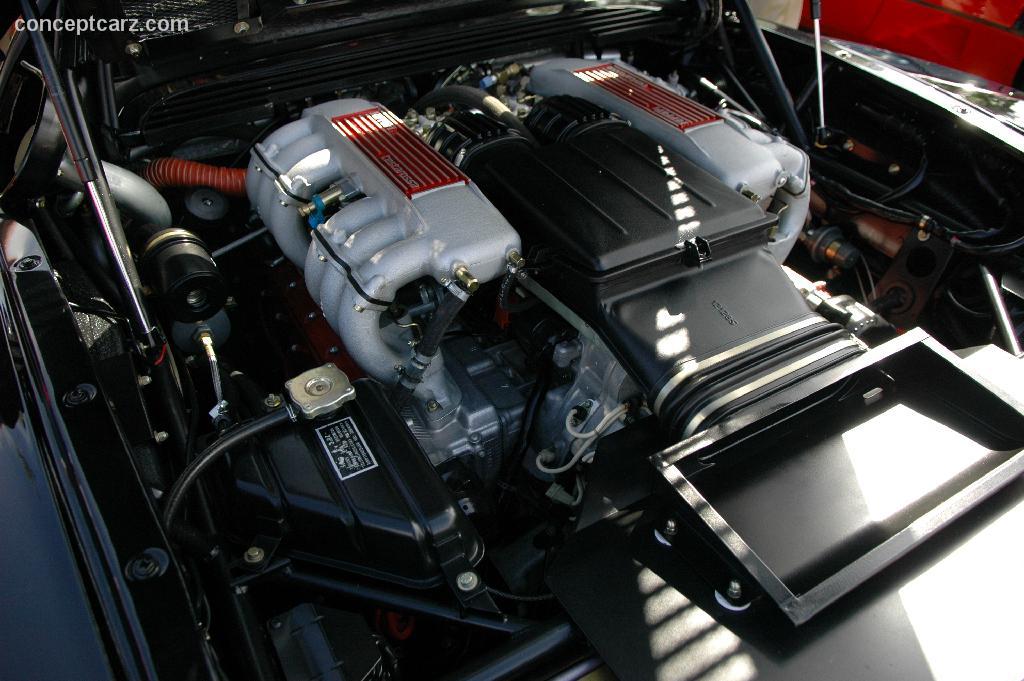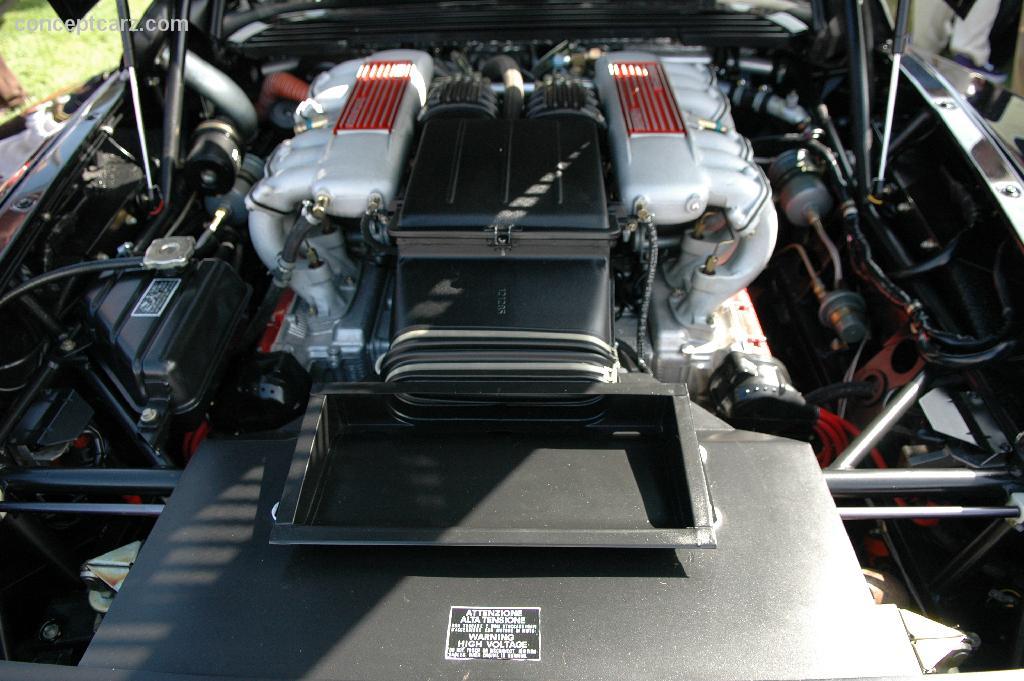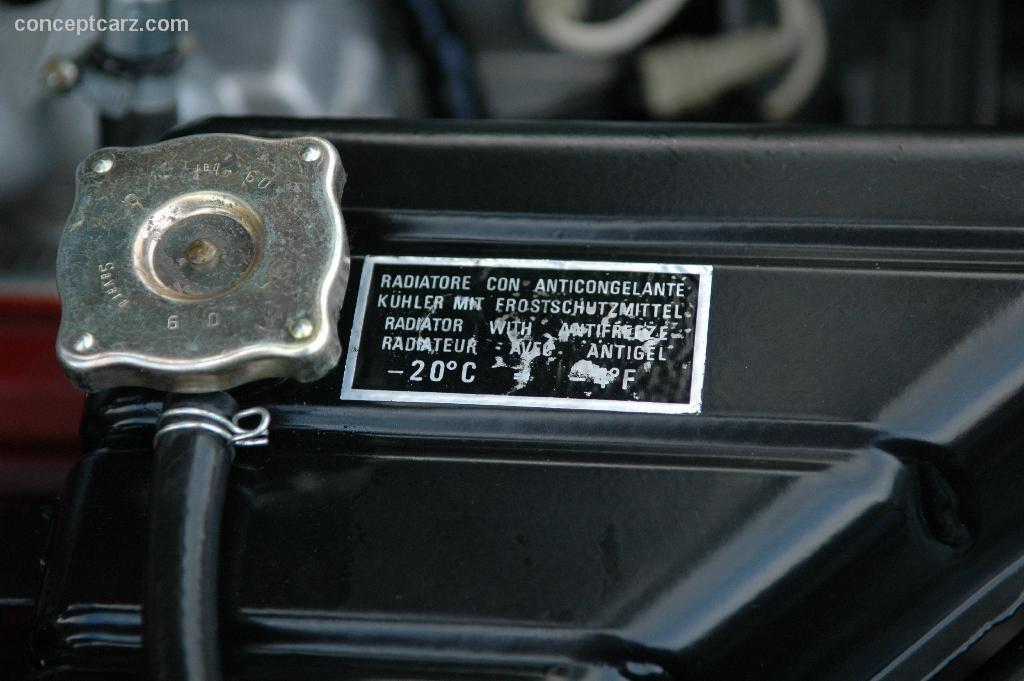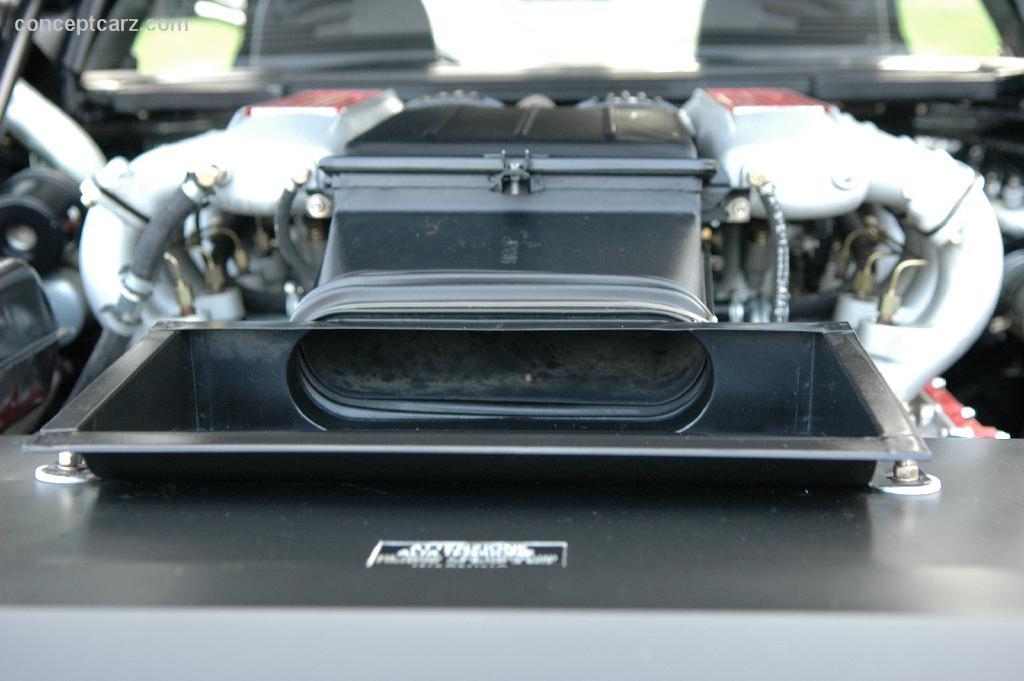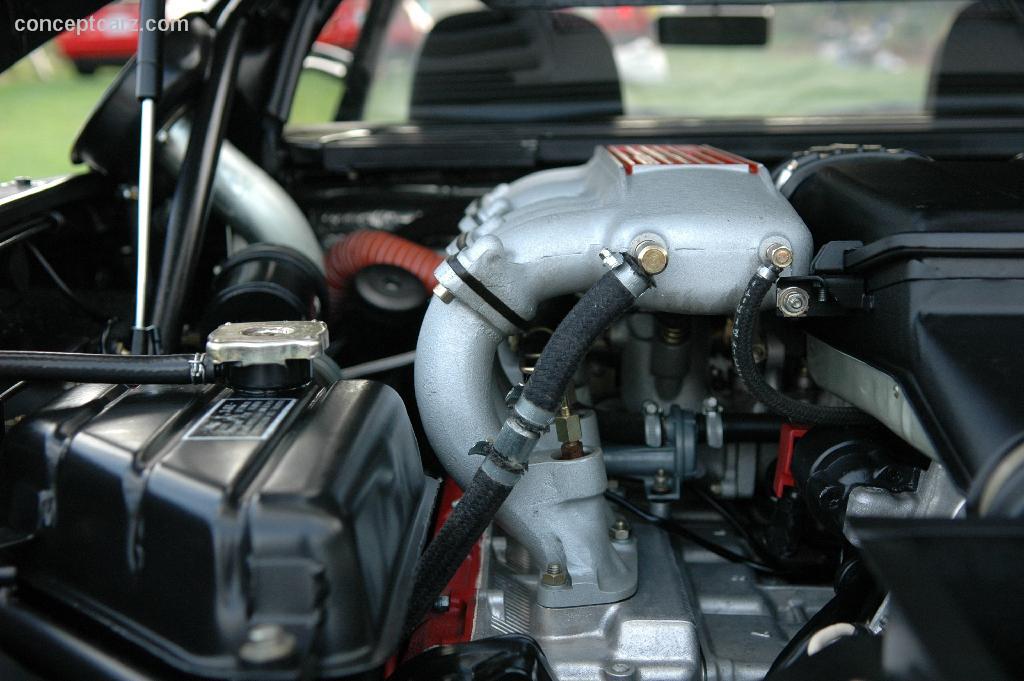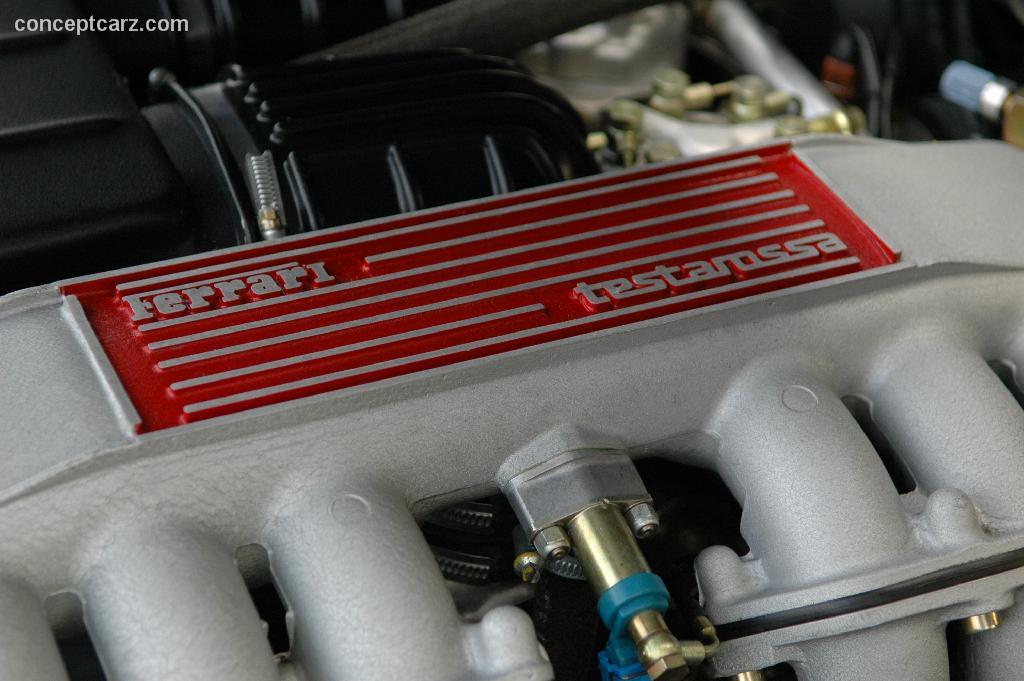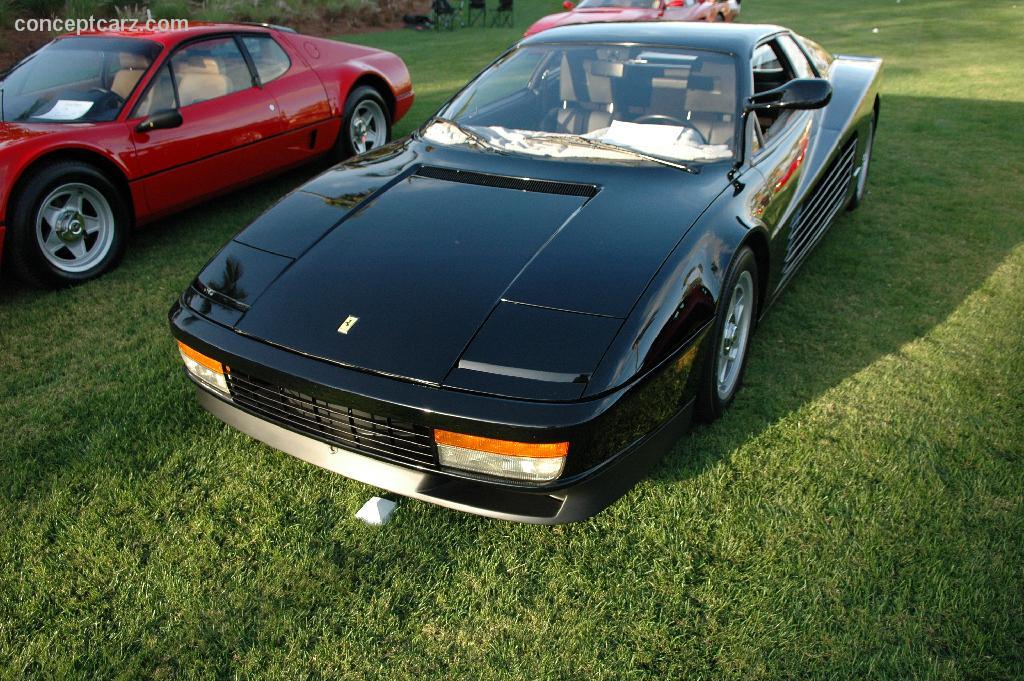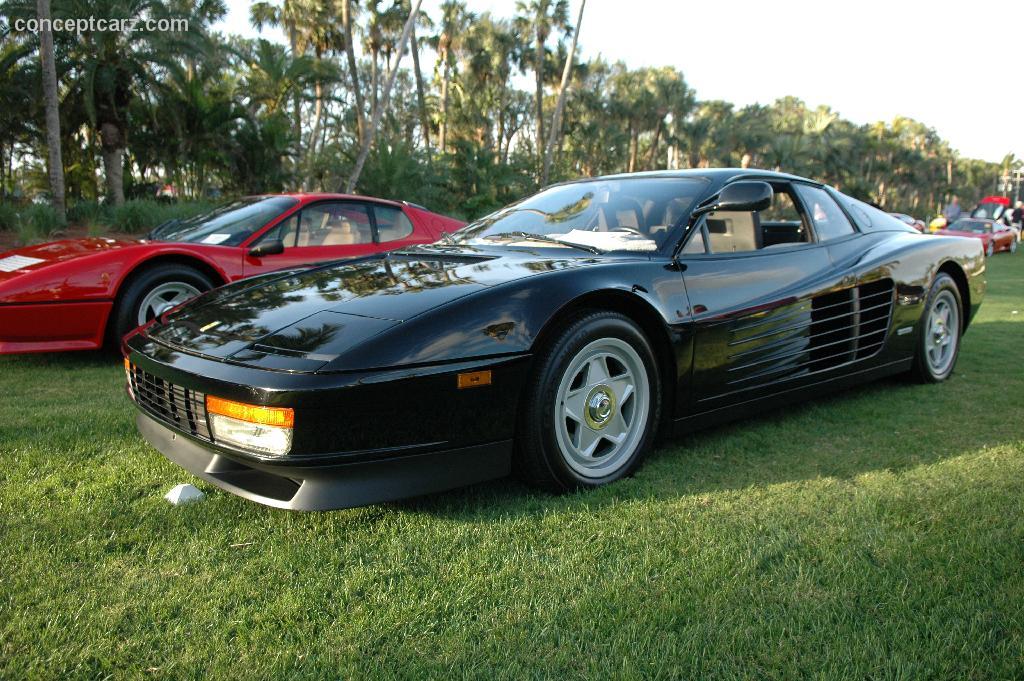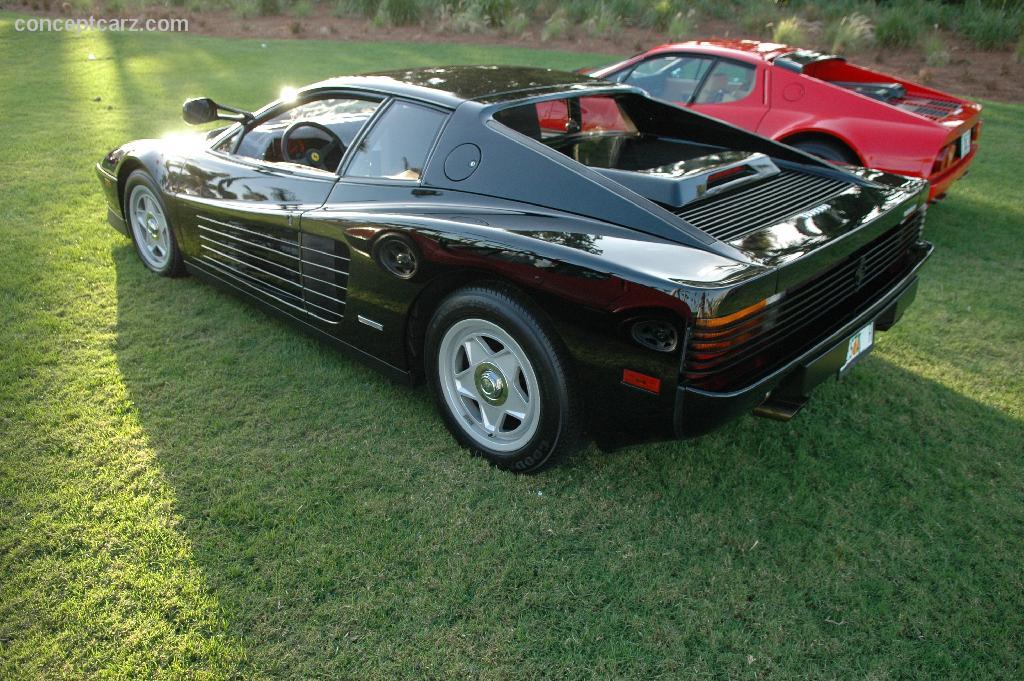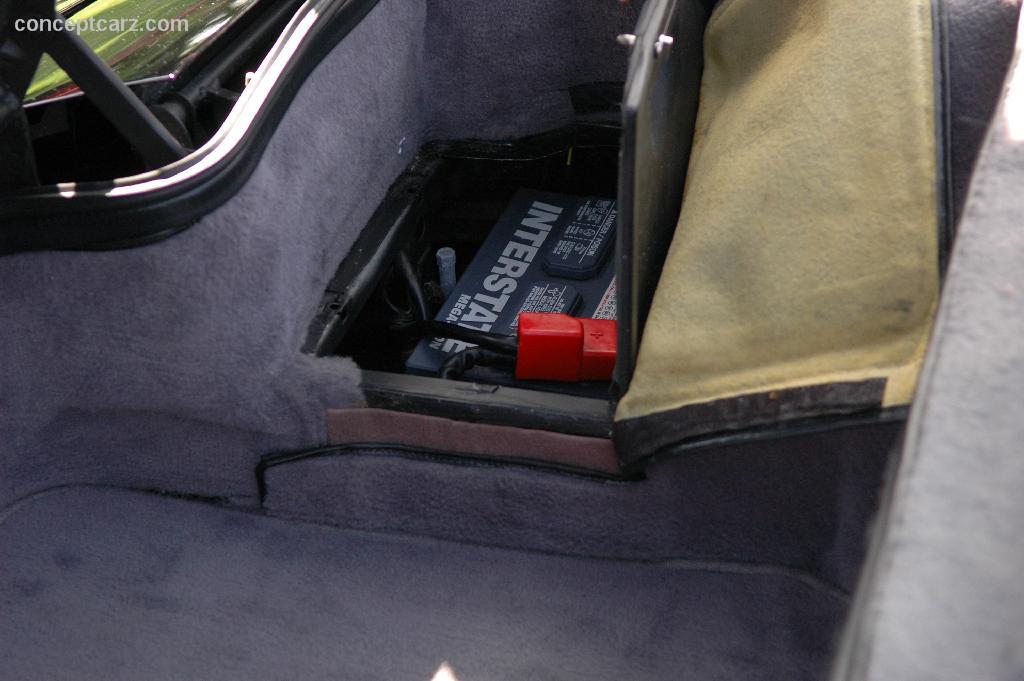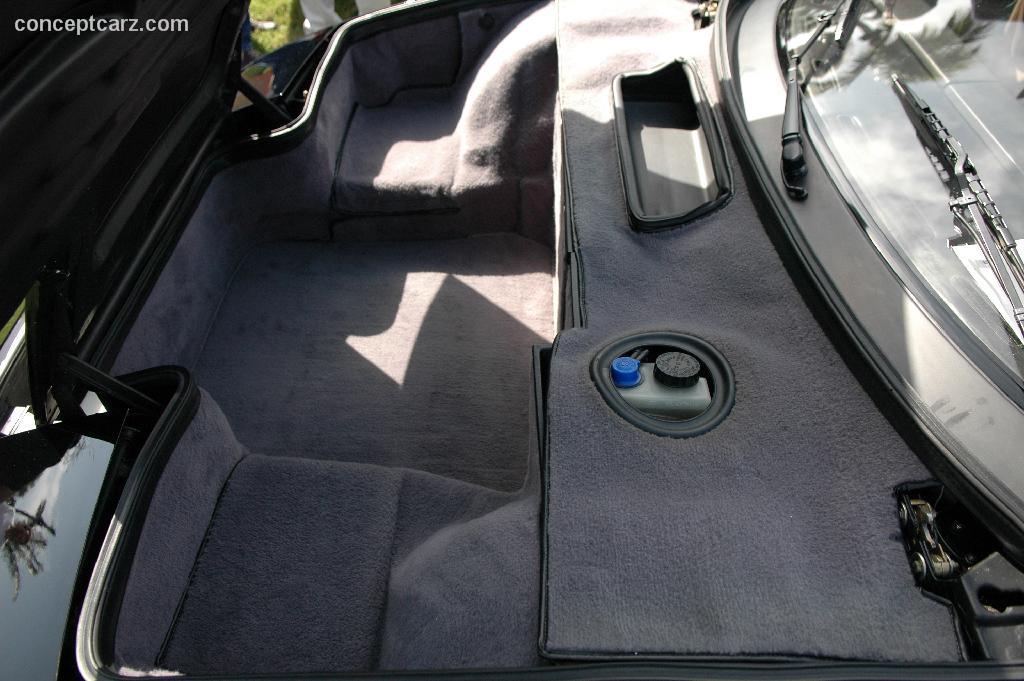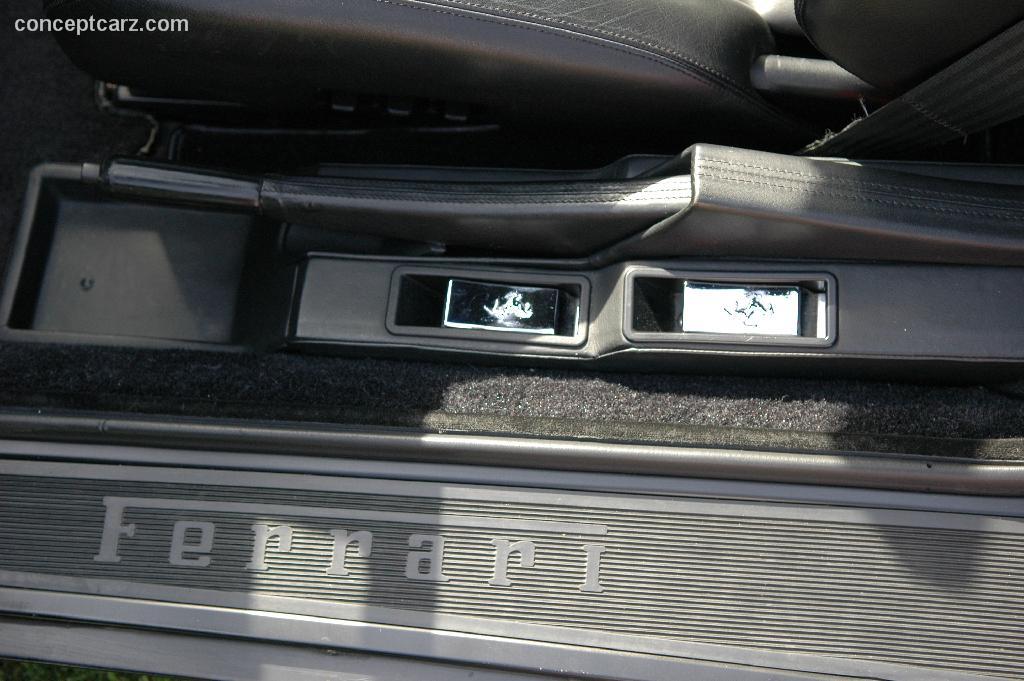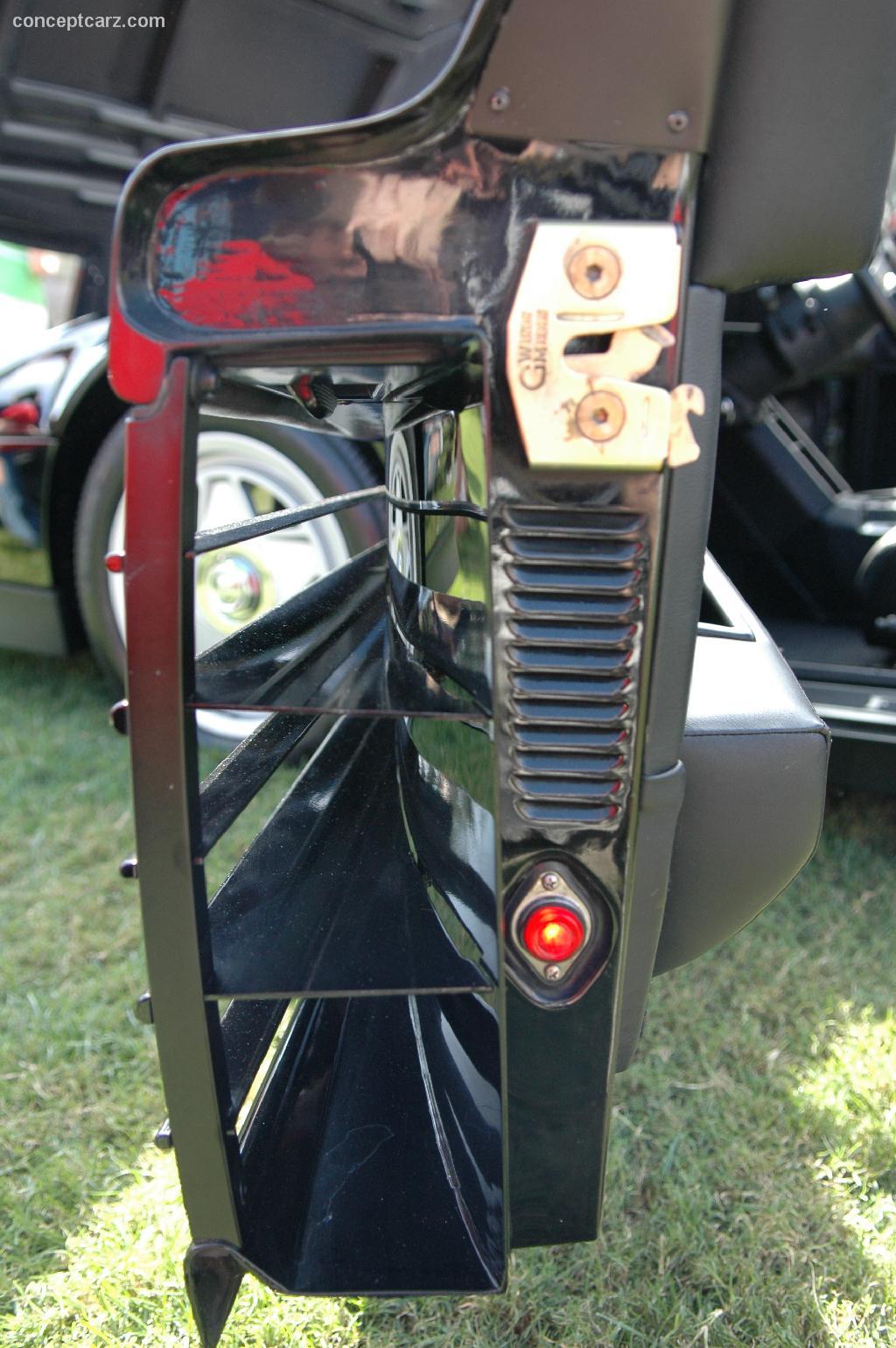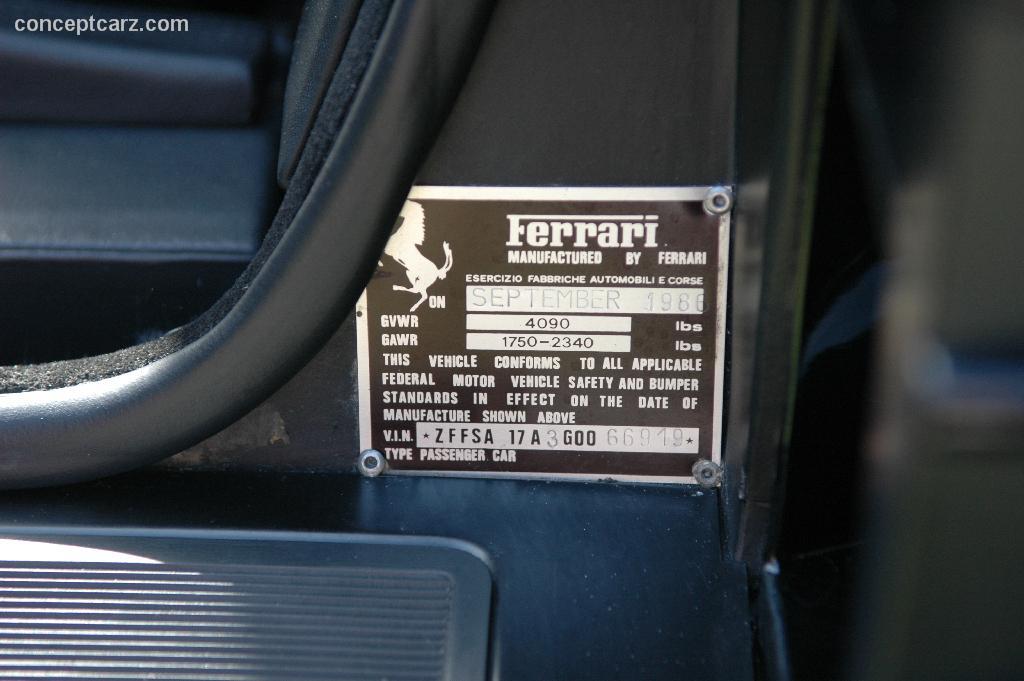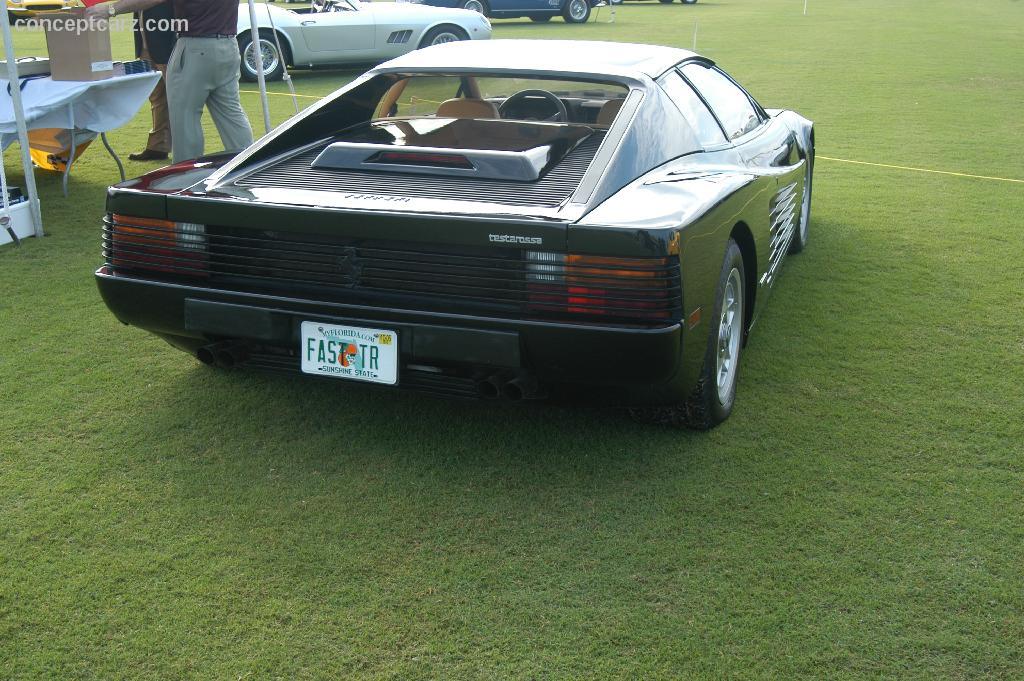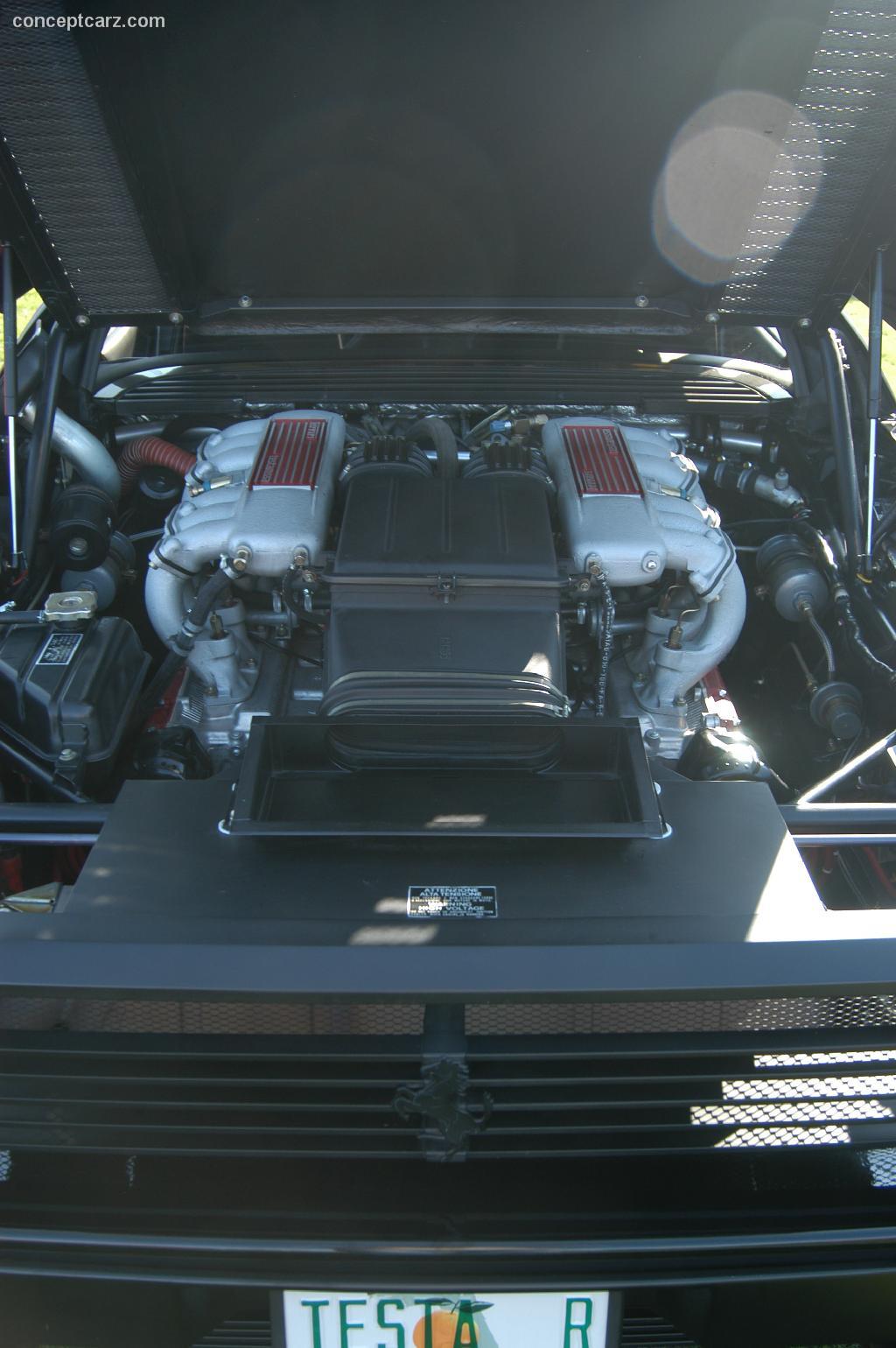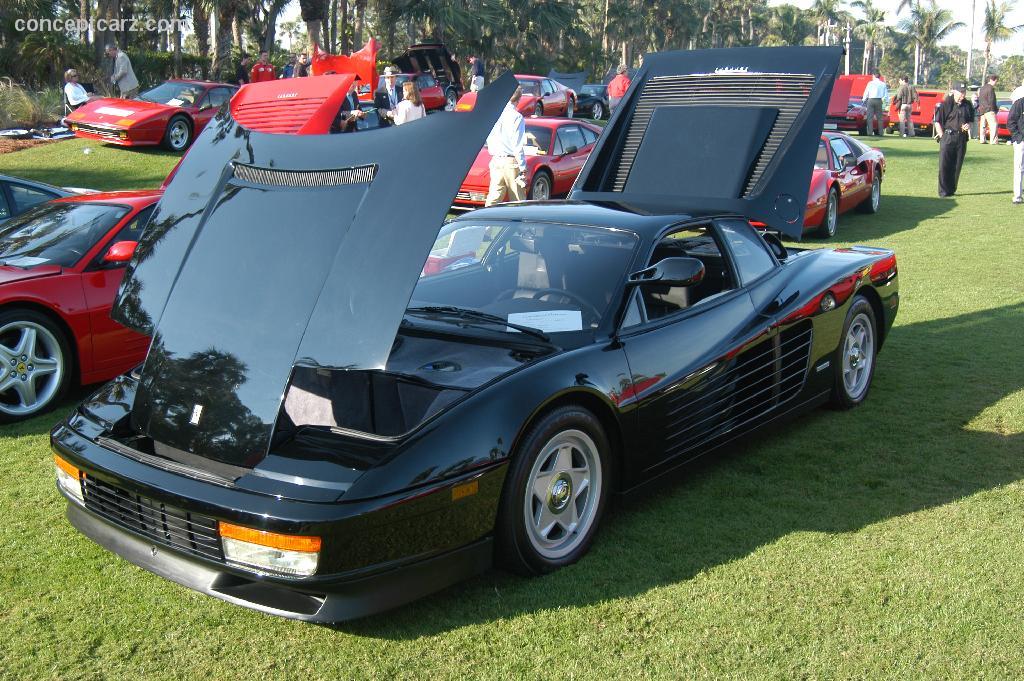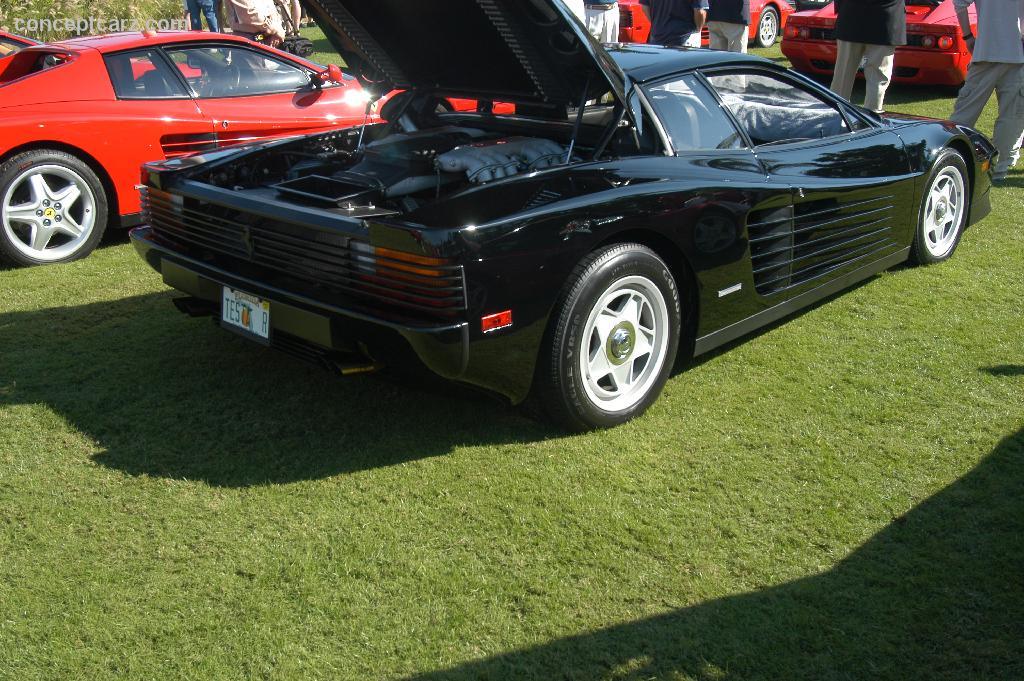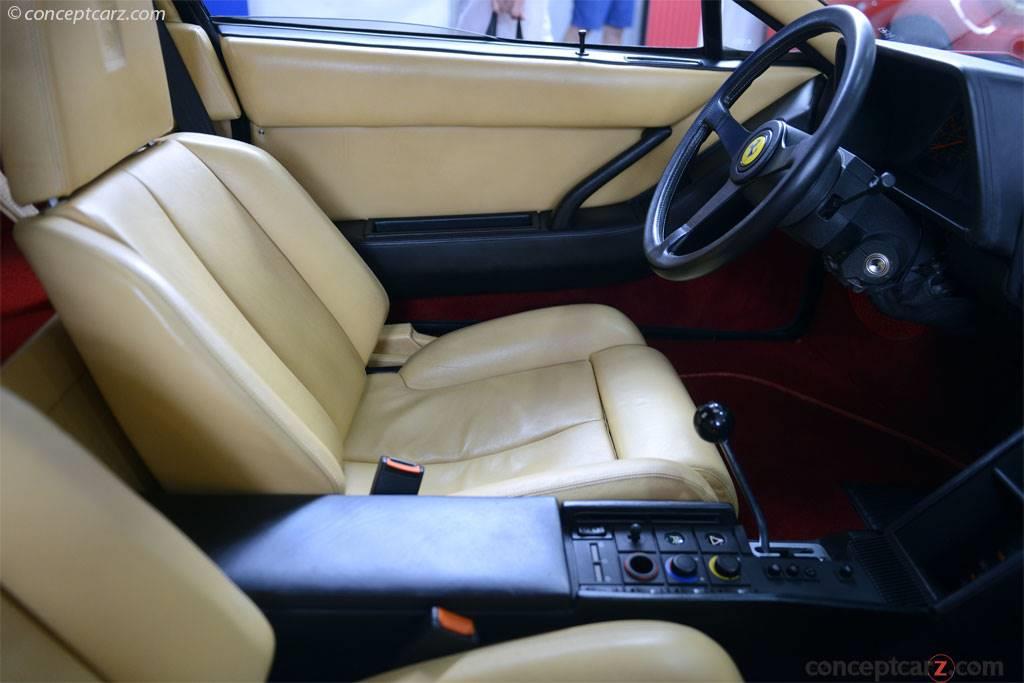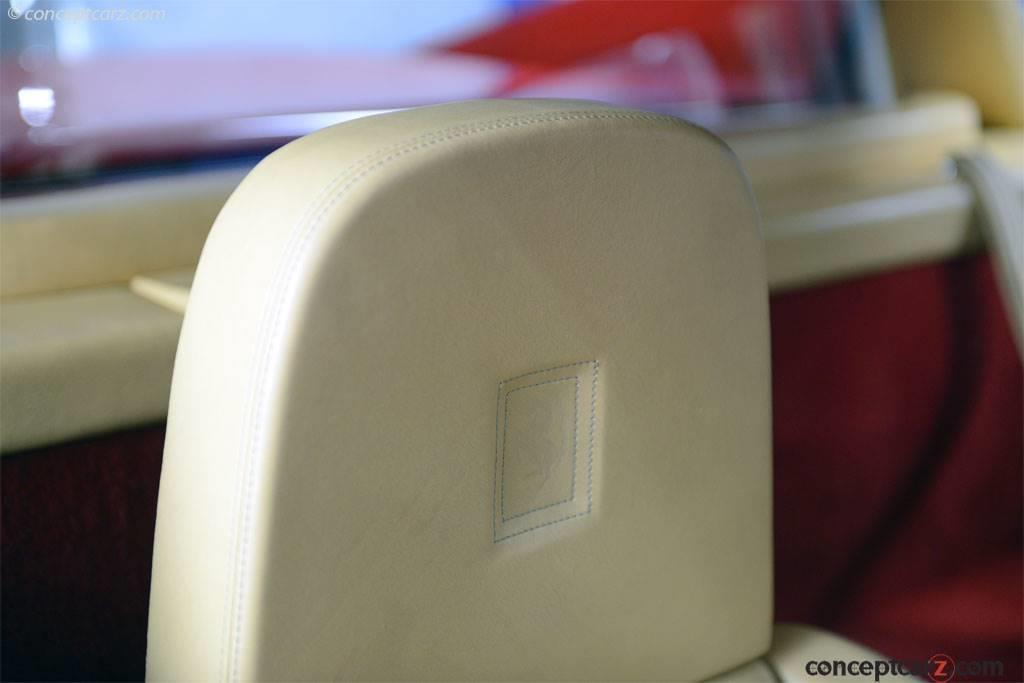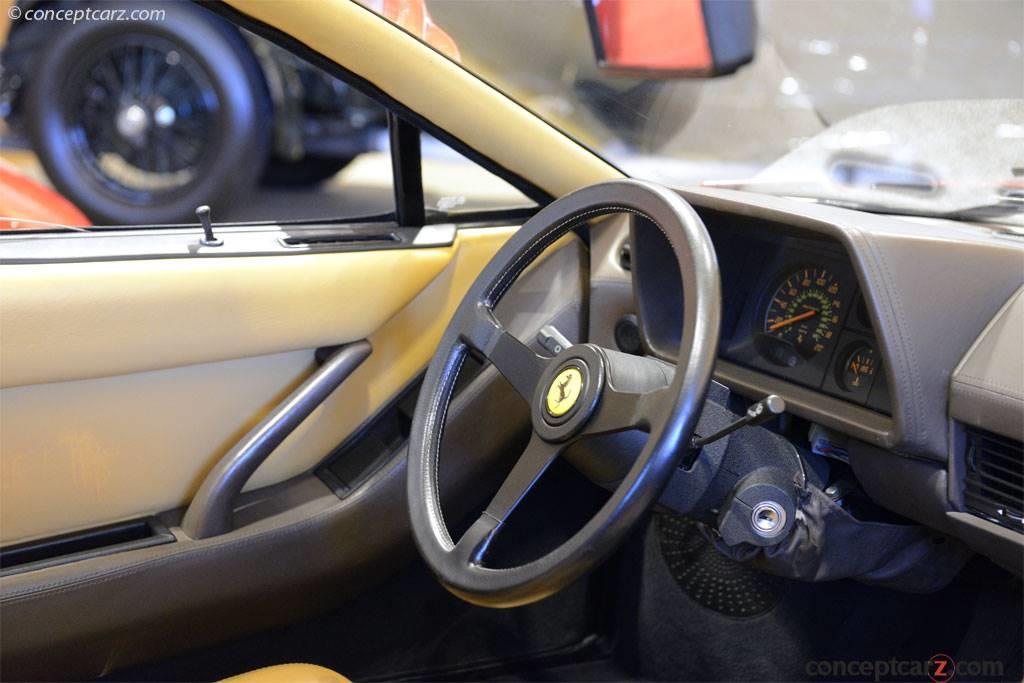The Pininfarina-designed Testarossa was introduced at the Paris Auto Show in September 1984 as a replacement for the 512 BB. This was not the first Testa Rossa in Ferrari’s history. In the late 1950s, the Testa Rossa name was used for one of its vehicles because of the red cam covers. Testa Rossa means ‘redhead’. This Testarossa was built for the US market and made its way into those showrooms in 1985. The vehicle was designed to comply with US emissions, regulations, and safety restrictions.
It used a double-wishbone suspension with coil-over units at the rear to help with the increase in weight. The body was aluminum with steel doors and roof.
The engine was a modified version of the 512 BB. It had four valves per cylinder, Marelli electronic ignition, Bosch K-Jetronic fuel injection, and was capable of producing 390 bhp from the 4943 cc horizontally opposed 12 cylinders. The zero-to-sixty time was about 5.3 seconds, and the top speed was above 180 mph.
The Testarossa is recognizable by its large cold-air inlets located on the side of the car. This was necessary because of the new location of the twin radiators in the rear. By doing this, it allowed space upfront for luggage. There was also special-made luggage that could fit behind the seats of the car.
In 1992 production of the Testarossa ceased after almost 7200 units were sold, making it one of the most popular Ferrari models ever.
